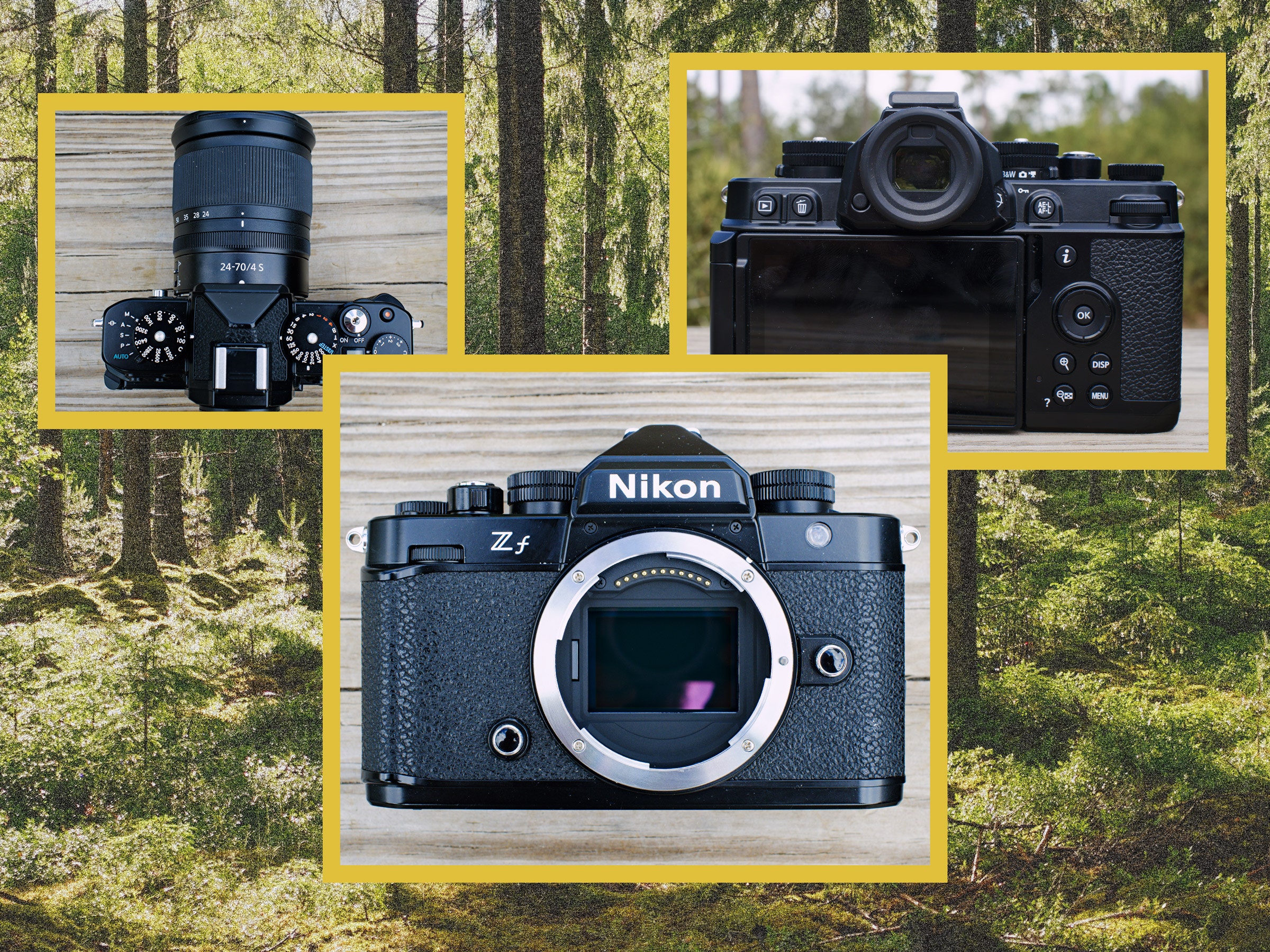Short of somehow growing a Na’vi neural braid and jamming it directly into the base of James Cameron’s skull, Avatar: Frontiers of Pandora is pretty much your best option for taking a virtual tour of the stunning alien moon of Pandora. This open-world shooter serves up a mind bogglingly large slice of the fantastic fictional universe to explore, from staggeringly dense forest areas to picturesque open plains and properly intimidating mountain ranges both on land and suspended impossibly in the skies above. However, hidden amongst all that beauty is a disappointing amount of bloat, with copy-pasted enemy outposts and facilities that made venturing off the main story path far less rewarding than it has been in recent landmark adventures such as Elden Ring or the last two Legend of Zeldas. I still largely enjoyed the 25 hours I spent trying to fend off a resource-hungry human invasion, but I wish the environment itself had presented me with more compelling reasons to fight for it beyond its surface-level splendor.
I must admit that the two Avatar films have each impressed me far more on a technical level than they have with the quality of their storytelling, and in that regard Frontiers of Pandora remains true to its box office record-breaking inspiration. Set on an entirely new Western Frontier continent separate from the region where Jake Sully and family have played out two-thirds of a an apparently five-movie story arc, Frontiers of Pandora is an entirely standalone adventure with only minor references to the events of the films and, thankfully, not a single utterance of the word “unobtainium” – at least, not that I can recall.
Even so, its overall story arc doesn’t stray too far from the established series formula. Humanity’s colonising Resource Development Administration, or RDA, is an oppressive force in the Western Frontier with its numerous mining facilities. It’s up to us, playing as an unnamed Na’vi raised in captivity, to unite the three isolated Na’vi clans in the region and make a stand against invaders hellbent on doing more damage to the natural habitat than actor Sam Worthington has done to the American accent.
Broadly speaking, I was happy to step into the Kevin Durant-sized feet of the eco warrior spearheading the uprising, and there were some pretty heavy moments along the way that brought some real weight to the conflict, but I can’t say that I ever became particularly bonded with any one character in Frontiers of Pandora. A big part of the reason I never felt too invested in the individual plights of the countless Na’vi clan members I met over the course of the journey is that they’re largely indistinguishable from each other in looks and have exotic-sounding monikers that are easily mixed up in my middle-aged memory. I can barely keep track of the names of my kids’ best friends, let alone be relied upon to discern the difference between one character called Eetu and another called Etuwa. Star Wars has its fair share of silly names too, but it’s also rich with countless different races, and personally I have a better chance of putting a name to a face when one face is green and the other has three pairs of eyes.
Furthermore, Frontiers of Pandora’s two main antagonists, RDA bad guy businessman John Mercer and his head of military muscle, General Angela Harding, barely have a presence for the bulk of the campaign. Instead, they’re mainly encountered via sporadic video communications, as though there’s been an outbreak of cat-person COVID and they’ve been left with no choice but to taunt you via Zoom calls. Neither are ever really confronted in a physical sense, and their fates effectively remain undetermined as of the end of the story – which left me feeling slightly underwhelmed as the credits rolled. It perhaps wouldn’t have been so bad had there been other high-ranking nasties to focus my attention on, but there’s a surprising absence of boss fights in Frontiers of Pandora. In fact, the closest I came to encountering a traditional boss was at the very end, and they died instantly when I fired a rocket into a gas canister that set off a chain reaction of explosions around them. That made for a slightly silly way to round out an otherwise mostly serious story.
Dances with Viperwolves
The Western Frontier itself, though, is truly remarkable. Frontiers of Pandora provides some genuinely breathtaking environments to explore, and thanks to the hyper-agility of your Na’vi character it’s a real joy to experience at speed. A responsive set of controls allow you to sprint, slide, and soar through the air with charged-up lunges, and there are plenty of environmental aids on hand to enhance your mobility. Namely, large leaves launch you across long distances and dangling vines can zip you up to the forest canopy in an instant. It’s exhilarating to whip along the tops of long, twisting branches and through hollowed-out logs, huffing the spores of special plants that temporarily boost your momentum and transform you into a blue blur that would almost make Sonic the Hedgehog turn an envious shade of green.
Frontiers of Pandora’s world certainly feels alive as well, with flowers that shyly withdraw into their stems as you pass by and pods that spit their seeds when you approach as though you just surprised them with a particularly hilarious joke. Because this vibrant ecosystem is so full of life, there’s naturally a great deal that can be harvested and killed in order to gather the resources required to prepare stat-boosting meals and craft mods for your Na’vi weapons and clothing. I enjoyed the tactile way you harvest flora by tightening your grip on it with the right trigger and swiveling it to the point of least resistance with the left thumbstick – it’s the first time I’ve used this sort of mechanic to pick fruit instead of locks, and it feels consistently satisfying when a piece of fresh produce suddenly pops off the vine.
I didn’t get too deep into the hunting side of Frontiers of Pandora, though, and mainly stuck to killing animals in self defense – like the snarling packs of viperwolves that regularly disrupted my morning jungle jogs. But one look at the Hunter’s Guide in the pause menu reveals a lengthy list of potential prey to track down, and although it’s not really my style to slaughter space cows, I do at least appreciate the thoughtfulness applied to the design of Frontiers of Pandora’s ecosystem. Like how if you can kill an animal cleanly with one arrow you can claim the best version of its meat for cooking, but on the other hand if you use a machine gun it will end up being completely spoiled. Similarly, certain fruits yield the most beneficial results for cooking if they’re picked at specific times, such as during the day or when it’s raining.
Frontiers of Pandora looks amazing when scrutinized up close, but it arguably looks at its best when viewed atop an Ikran soaring through the skies above it, and once I’d bonded with my winged steed some five hours into the story I pretty much chose to travel by air at every opportunity I got. Admittedly, piloting the Ikran doesn’t quite nail the awesome sense of speed here that it conjures up in the films, but they’re still supremely useful for wiping out smaller RDA installations from above, and it really can’t be understated how consistently exhilarating it is to leap off a cliff’s edge and plummet towards terminal velocity, only to tap a button and have your loyal Ikran swoop in to catch you and carry you to safety on its back.
It’s therefore a little strange, then, that regular, old-fashioned ground mounts aren’t introduced to the story until after you’ve been given access to their flying equivalent, and it meant that I rode one of Pandora’s direhorses precisely once as part of the tutorial mission that greeted me upon my arrival in its Upper Plains region, and then never felt the need to saddle one ever again. After all, why steer an alien horse around obstacles on the ground when you can issue forth a high-pitched yodel to call down your Ikran pal and then just fly over them?
Similarly, it is a slight shame that the Clouded Forest, the region in which the bulk of the story’s third act takes place, is by far and away the least attractive area in the entire Western Frontier. It’s shrouded in so much fog that it’s the one part of Frontiers of Pandora that could probably run on a Nintendo 64, and while the final hours of the story are some of the most spectacular in terms of action, they didn’t leave as lasting an impression of my time exploring Pandora as the campaign’s more majestic first half.
Blue Murder
Since you’re basically only wearing a loincloth and a snarl, you’re pretty vulnerable to the attacks from the human forces that guard every RDA installation you’re tasked with taking down, so it’s just as well you have both primitive Na’vi tools and high-tech human weaponry at your disposal. Collectively, Frontiers of Pandora’s arsenal seems pretty limited compared to those featured in Far Cry 6 and Horizon Forbidden West, but there’s enough here to get the job done – specifically, I relied mostly on the Na’vi longbow for sniping ground troops, the assault rifle for shredding aircraft from a distance, and the surprisingly overpowered shotgun to reduce the RDA mechs into piles of sparking scrap.
More powerful versions of each weapon class can be found hidden throughout the world or as rewards for completing side quests, and equipping the most optimal gear in your loadout boosts your overall combat level in a similar way to Destiny or The Division. In turn, each main story mission or side quest is marked with a recommended combat level, but in my experience it didn’t seem to pose too much of an additional challenge if I went into a mission under-leveled, at least on the default difficulty setting. It certainly helped that enemy AI is generally pretty dim, and some of the special abilities that you can unlock in its skill tree can be easily abused. Once I gained the ability to punch through the cockpit glass and tear mech pilots right out of their harnesses, I proceeded to forcefully eject each and every one of those fools like they were Nickelback CDs mistakenly inserted into my car stereo.
Frontiers of Pandora’s final fistful of missions do raise the stakes and up the enemy numbers substantially, though, and it made for some terrifically tough and tense encounters that left me with elbow-shaped grooves in the tops of my knees from leaning closer and closer to my television. Yet while I appreciated these more fierce and close-quartered forms of firefights against far more heavily armoured and agile mechs, there were certain times where I couldn’t be quite sure if I was being challenged or simply cheated. In some instances it felt like enemies were infinitely respawning, in others it appeared they had a supernatural sense of my location at all times, and most frustratingly, there were a number of occasions where I was clearly being shot through cover.
On the whole, Frontiers of Pandora’s shooting is mostly solid but it doesn’t really evolve in any substantial ways over the course of the story. It’s nice that you can use your Na’vi sense to spot weak points on mechs and potentially take them out with one well-placed shot, and being able to craft special ammo like electric-shock rounds for the shotgun certainly comes in handy. But it never quite feels as freeform as the Far Cry series at its best – as far as I can tell you can’t ever use bait to lure the wildlife into an enemy camp in order to cause a deadly distraction, for example, and although you can use your computer-hacking tool to disable gun turrets and mechs, you can’t seem to ever use it to turn those machines against each other. When you factor in the fairly limited number of enemy types found throughout, I didn’t really feel like I ever had to adjust my approach to each combat encounter to any significant degree.
New Look Na’vi-gation
HUD clutter has long been a concern for many of Ubisoft’s open-world adventures, and it was only recently that I found myself struggling to spot the desert surroundings of Baghdad in Assassin’s Creed Mirage beyond the swarm of obnoxious icons that dotted the landscape in its guided mode. To its credit, Frontiers of Pandora has taken a Marie Kondo-style clean out to its presentation, and although it took me a while to adapt to not having my hand held as much I ultimately found it to be a change for the better.
Navigating the world in relies largely on the use of your Na’vi sense, which momentarily highlights interactive objects in your surroundings as well as the general direction of your currently tracked objective, but these highlights quickly fade from view once you release the Na’vi sense button and afford you an unimpeded view of the world around you. There were occasionally times where I did lament the absence of a minimap, like when I found myself running in circles in one of the bigger Na’vi camps simply trying to find a weapons trader, but for the most part I enjoyed how Frontiers of Pandora’s navigation allowed me to find my own way through the world rather than just blindly follow a more strictly guided trail.
I just wish there were better rewards for exploring off the beaten track, though, because the more I moved around Frontiers of Pandora’s expanse the more of the same RDA mining facilities I would stumble upon, each requiring similar if not identical methods of crank-turning and exhaust vent-shooting in order to sabotage them. In fact, both the main story missions and optional RDA installations have you repeatedly indulging in sabotage like you’re a blue-skinned Beastie Boy, and although it's an impressive effect to see previously polluted areas get reclaimed by nature it all starts to feel a bit samey by the end. I can get behind the strong environmental message that Frontiers of Pandora shares with James Cameron’s films, but this isn’t exactly the sort of recycling I had in mind.
Elsewhere, I never found any truly emergent gameplay surprises, and more often than not I just found acres of empty space. At one point I spent about half an hour touring around a series of floating islands in the sky, and all I came away from it with was a piece of fruit and a handful of sky moss. That’s a heck of a long way to travel just to collect the ingredients for a particularly awful-sounding smoothie, and I can’t recall ever leaving so empty-handed from one of Hyrule’s sky islands.
There are plenty of sidequests to find and complete, but beyond the practical rewards for doing so in the form of extra resources and skill points, there’s just not the same sense of awe or discovery to be found compared to the more consistently delightful detours experienced in Elden Ring or The Legend of Zelda: Tears of the Kingdom. The standard of open-world excellence has been raised in recent years, and Frontiers of Pandora can’t quite measure up despite how wonderful it all appears at first glance. To be fair, it’s a gigantic map and I haven’t covered all of it, but the law of averages suggests that if there was some truly awesome stuff to find out there I would have found at least some of it by now.





